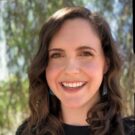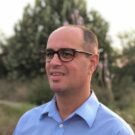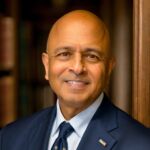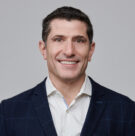QBE North America’s activities in the wake of this year’s hurricanes demonstrate the strength of the entire QBE global enterprise, measured with gauges beyond financial capital.
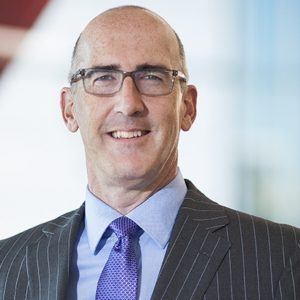
Related article: The Role of Leaders is Serving Employees: QBE NA’s CEO Johnston
Russell Johnston, QBE North America’s chief executive officer, sat down with Carrier Management to talk about leadership and his company’s competitive advantages in early October—just a few weeks after a trio of hurricanes made landfall.
“So many different firms talk about global strength as balance sheet, and to me, balance sheet is the minimum requirements to actually play the game,” said Johnston. “When we think of global strength, we think of it in the context of [having] capability that sits everywhere in the world. How do we leverage that capability to the benefit of the agent or the policyholder in a local geography?”
Johnston referred to Hurricane Harvey to explain the distinction. Harvey hit “in an area of the country where Spanish is actually a fairly frequently spoken language” among policyholders. “So, we pulled a bunch of adjusters out of our Latin American operation and said, ‘We need help.'”
In addition, he reported that QBE North America also called upon adjusters from QBE’s Asia-Pacific region. “They call them cyclones there, as opposed to hurricanes, but the claims are the same. To me, global strength is taking those assets that QBE has somewhere in the world and mobilizing them to the benefit of our constituents here locally.”
Johnston, who took the helm as CEO of QBE North America in May 2016 from a retiring David Duclos, talked more specifically about the strategy for specialty insurance business in North America, noting that leveraging the global strength of QBE is just one pillar. The other two are “applied expertise” and “experience of excellence,” he said, going on to define each in turn.
“You can have a whole bunch of experts, but if the experts actually don’t end up delivering value to the customer, then it’s like the tree that falls that nobody hears it. You can’t just be good at what you do. You have to be able to deliver it to the customer in a meaningful way,” he said, referring to the “applied expertise” pillar.
A simple example is the North American crop business, in which underwriters, sales people and claims people are all farmers. “Whether they’re talking to an agent or a policyholder, each one of those individuals goes home at night and has a 200-acre farm that they care for. They can really connect with what’s important to that segment that we serve,” he said.
 As for the “experience of excellence” pillar, Johnston noted that people within the company use the phrase “brilliant basics” to describe the same thing, getting to the central idea: “There are simple things that we can do, that if we do them really well, we will actually differentiate ourselves.”
As for the “experience of excellence” pillar, Johnston noted that people within the company use the phrase “brilliant basics” to describe the same thing, getting to the central idea: “There are simple things that we can do, that if we do them really well, we will actually differentiate ourselves.”
As an example, “we measure how quickly our claims adjusters pick up a call when a policyholder is calling. It’s generally less than 10 seconds, even during a hurricane…You’ve got a policyholder that’s in their time of need. Do you want them to hear elevator music for two minutes?”
Looking at QBE North America from the outside-in, Johnston said that before he signed on as CEO after 25 years at American International Group, he was impressed with a characteristic he doesn’t often associate with a large, global financial services company—it is “fast and nimble.”
“This is a company that’s done a lot in a very short time,” he said, referring not just to profit turnaround work that predecessors had engaged in during prior years but also to the growth of the specialty franchise that accompanied the fixes. Recalling that QBE entered the crop business in a big way in North America with acquisition, other swift moves are noteworthy, he said, referring to the sales of lender QBE’s North American mortgage and lenders services business and some agencies, “really starting to recraft what the platform is going forward—building a specialty business from what was effectively an A&H [accident and health] and E&O [errors and omissions] chassis.”
“That’s not easy to do,” he said, recalling his observations from an outsider’s vantage point. “This is a company that, when it decides it wants to do something, it moves,” he thought.
(Editor’s Note: QBE closed a $565 million deal for NAU Country in July 2010 and a second deal to buy AgroNational and some U.S. specialty program business from RenaissanceRe in 2011. In 2015, the company sold its lenders-placed business to National General and sold some U.S. MGAs to Alliant. After some profit hits to QBE Group from North America write-downs and reserve changes in 2012 and 2013, the company ramped up other specialty areas with talent acquisitions, such as management and professional liability.)
Currently, QBE has roughly 30 locations in North America, Johnston told Carrier Management, describing four businesses: crop, property/casualty, specialty and reinsurance. As in crop, where farmer-employees deal with customers, the goal is to deliver something that differentiates QBE North America in each of its businesses. Johnston offered the transactional liability specialty line as an example (insurance for reps and warranties and other facets of merger and acquisition deals). A number of former M&A lawyers staff the insurance practice. “They understand the urgency. If someone’s trying to get an M&A transaction done, you can’t say, ‘I’ll give you a quote in 45 days.’ You’ve got to be nimble,” he said.
Limited Distribution
A fact that Johnston believes isn’t fully appreciated by outsiders is that QBE Group’s share of wallet with the largest brokers ranks in the top five in a lot of major global markets—with the exception of North America. In North America, “we actually leverage the global relationship that we have with these brokers, and specialty has been the business that has really had that inure to its benefit in a significant way.”
Recently, QBE North America expanded its distribution strategy to include a specific focus on a portion of the wholesale market, Johnston said, explaining a comment by QBE Group CEO John Neal last year, signaling that QBE was in the process of launching a North American excess and surplus lines business. Johnston confirmed that QBE North America already writes roughly a half-billion-dollars of “surplus lines-papered business.” (Editor’s Note: That statutory result, in fact, ranks QBE North America among the top 20 E&S carriers, according to A.M. Best.) The figure includes business written out of London that is captured as surplus lines business in the U.S. and specialty business written in the U.S. on surplus lines paper.
“We actually have a lot of competency to write E&S. What we have not had is a strategy with a dedicated focus to the wholesale market,” he said, noting that Jude DiBattista came on board (from Aspen) “and started to surround himself with some underwriters. Their pure focus is three wholesalers—the three largest wholesalers in the United States within three discrete product segments: inland marine, excess casualty and excess property.”
In North America, QBE also has a “limited and preferred distribution” model on the retail side. “For a company of our size, most people would probably say QBE has 5,000 or 10,000 front doors—agents—that we do business with in the U.S.” In reality, the number is 1,400—”and 80 percent of our business comes from the top 50 to 75.”
“We don’t want to do business with everybody. We think it actually dilutes our brand,” he said. “There are certain agents and certain brokers in certain geographies that we absolutely want to do business with, [and] we want to drive as much share of wallet with them as possible. And if another agent knocks on our door, we’re not open.”
“We think that with our value proposition, our global footprint and the segments that we’re focused in on, we can do plenty of business with a very, very focused number of partners instead of trying to be all things to all people,” he said.
Hi, My Name Is Sydney
Another partner who could be selling insurance for QBE soon has an automated voice. “Hi, my name is Sydney,” she said, introducing herself to online customers during test runs at QBE’s innovation hub in Sun Prairie, Wisc.
Johnston described a typical interaction between a customer seeking a businessowners policy and Sydney, who will simply ask for an address and deliver a quote 15 seconds later.
The innovation hub that designed her started up about two years ago. “It’s not just the North American hub. It supports our business globally, but it’s based here in the U.S.” Data scientists and other technology experts work with leaders in underwriting, claims and finance to bring innovation to the front of the business, he said, noting that another innovation pairs digital camera technology with a software package to grade roofs on their propensity to sustain water damage. “Now, we can fly drones over the roofs of homes and evaluate [that] based on the picture,” which can also uncover existing damage, Johnston said, noting that spectrograph technology is used to understand where weaknesses are in the roof.
Also on the innovation front, Johnston said the company made a decision earlier this year to start an internal organization called QBE Ventures. QBE Ventures will make investments in InsurTechs, focusing on those with technology that QBE can use in its underwriting and claims functions. Already, the unit has narrowed a field of 200 companies scanned at the beginning of this year down to 40, cutting that number down to 20 after interviewing the 40 candidates for investment.
Ultimately winnowing that down for four, Johnston reported that QBE will officially announce an equity and a partnership by the end of the year.





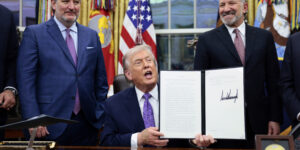















 Viewpoint: Mapping Evolving Regulatory Terrain for MGAs, MGUs and Other DUAEs
Viewpoint: Mapping Evolving Regulatory Terrain for MGAs, MGUs and Other DUAEs  Water Leaks, Frozen Pipes Top List of Small Business Claims: The Hartford
Water Leaks, Frozen Pipes Top List of Small Business Claims: The Hartford  ‘Dream Is in Sight:’ Chamber, Reinsurers, Insurers Urge Florida to Stay the Course
‘Dream Is in Sight:’ Chamber, Reinsurers, Insurers Urge Florida to Stay the Course  Berkshire Hathaway Announces Leadership Appointments: New CEO at GEICO
Berkshire Hathaway Announces Leadership Appointments: New CEO at GEICO 




